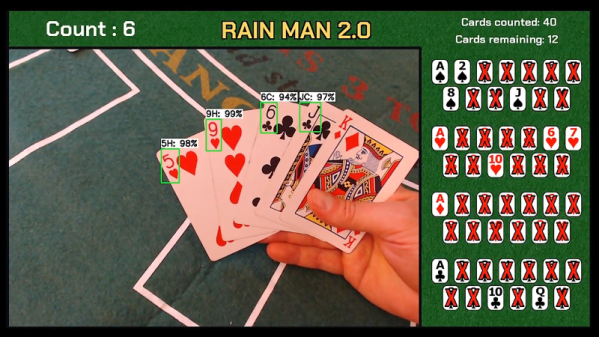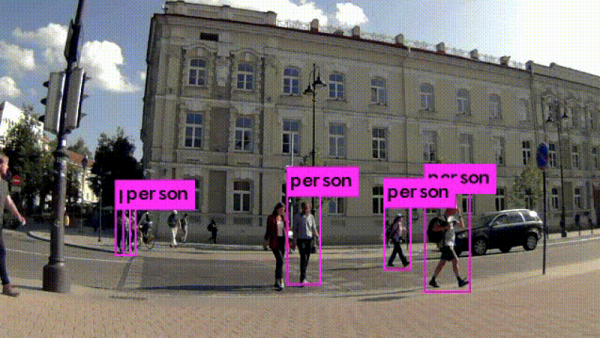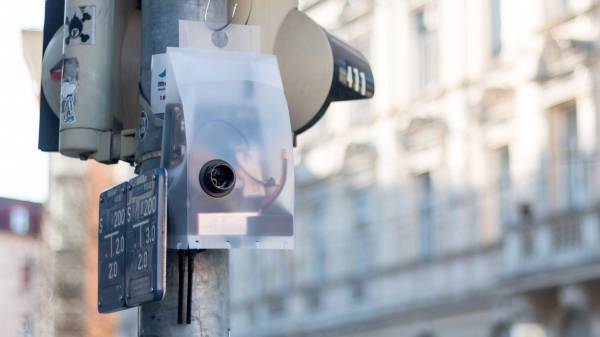Finally, a useful application for machine vision! Forget all that self-driving nonsense and facial recognition stuff – we’ve finally got an AI that can count cards at the blackjack table.
The system that [Edje Electronics] has built, dubbed “Rain Man 2.0” in homage to the classic title character created by [Dustin Hoffman] for the 1988 film, aims to tilt the odds at the blackjack table away from the house by counting cards. He explains one such strategy, a hi-low count, in the video below, which Rain Man 2.0 implements with the help of a webcam and YOLO for real-time object detection. Cards are detected in any orientation based on their suit and rank thanks to an extensive training set of card images, which [Edje] generated synthetically via some trickery with OpenCV. A script automated the process and yielded a rich training set of 50,000 images for YOLO. A Python program implements the trained model into a real-time card counting application.
Rain Man 2.0 is an improvement over [Edje]’s earlier Tensor Flow card counter, but it still has limitations. It can’t count into a six-deck shoe as the fictional [Rain Man] could, at least not yet. And even though cheater’s justice probably isn’t all cattle prods and hammers these days, the hardware needed for this hack is not likely to slip past casino security. So [Edje] has wisely limited its use to practicing his card counting skills. Eventually, he wants to turn Rain Man into a complete AI blackjack player, and explore its potential for other games and to help the visually impaired.
Continue reading “Let The Cards Fall Where They May, With A Robotic Rain Man”















